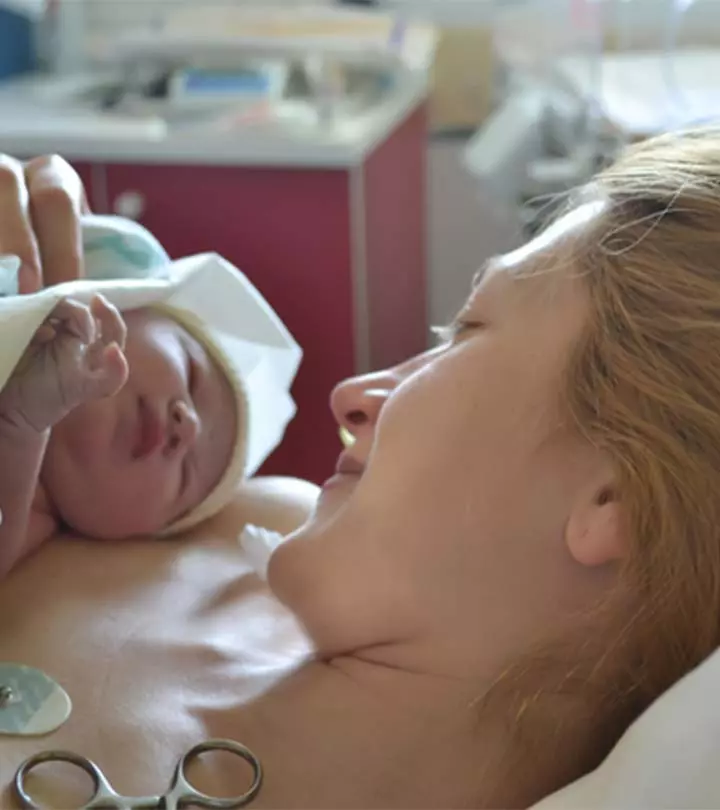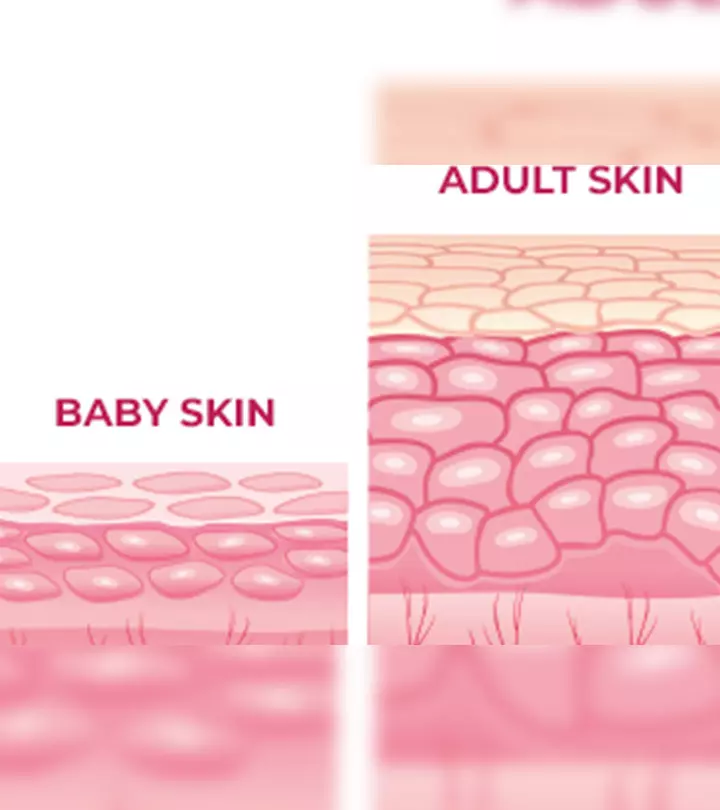

Image: Shutterstock
The umbilical cord is hardly given its due credit. While everyone notices it for a few minutes soon after birth, it is forgotten the very next minute like yesterday’s news. We all know what an umbilical cord is. It is the slippery-looking long cord that forms a connection between the placenta and baby during pregnancy. It facilitates the movement of nutrients and waste between the soon-to-be mommy and the fetus with the help of the placenta (1). Although umbilical cord was clamped immediately after birth earlier, recent recommendations state otherwise. It is now being suggested to wait for one to three minutes post the birth to clamp the cord (2).

Generally, people don’t know much about this amazing cord that ensures the exchange of goodies during pregnancy. Here, we bring you a few of these interesting facts:
1. The Cord Knot Happens
Your baby might do a lot of somersaults in your belly when he/she is tiny enough to roam around freely. In the process, he/she may play with the umbilical cord too. You may fear the umbilical cord getting wrapped around his/her neck, which might lead to further problems during delivery. However, more often than not, it is nothing to worry about. These knots, known as the nuchal cords, are pretty common. Nearly 12 percent of babies were born with it as per a 2018 study (3). More often than not, it is just a single loop and can be easily taken care of by the doctor at the time of birth.
2. The Cord Will Stop Working When Required
The environment inside an amniotic sac is properly temperature-regulated (4). While the baby is in the womb, the cord carries the oxygen-filled blood from the placenta to it. However, during birth, the blood flow changes causing it to circulate just inside the baby. Soon, the flow within the cord stops naturally, which would happen even if the cord isn’t clamped immediately (5). Once its work is done, the cord stops on its own.
3. The Umbilical Cord Tissue Is Capable Of A Lot
Image: Shutterstock
While you might have heard a lot about the cord stem cells, it’s the umbilical cord tissue that is the new phenomenon. You might have heard of the blood stem cells (HSCs or hematopoietic stem cells) being used to treat a range of blood-related illnesses. But, the limitation comes in terms of the volume of the blood which can be derived from a single cord. Thus, they thought of utilizing a second stem cell population called the mesenchymal stem cells or MSCs. And, it was recently found that both these stem cells combined together can increase the stem cell engraftment multiple folds. On further research, it was discovered that the richest source for MSCs during birth is the umbilical cord tissue. This means that both these stems cells can be harvested simultaneously for the treatment of both blood or non-blood disorders (6).
4. The Cord’s Origin
The umbilical cord develops its final shape by pregnancy’s 12th week. The rudimentary form originates somewhere between the fourth and the eighth week of gestation. The amnion enveloping tissue expands from the body stalk, the umbilical coelom, and the omphalomesenteric duct. And, the flow of the blood within the cord begins somewhere at the end of the fifth week of pregnancy (7).
5. Blood Flow In The Cord
Image: Shutterstock
Placenta receives blood from both sides – the mother as well as the fetus. Since it has two different blood circulatory systems, the placenta is known for being a unique vascular organ. The placenta, which is attached to the fetus with the help of the umbilical cord, transports oxygen and nutrients from the mother. Though the goodies are exchanged, the blood doesn’t get mixed directly (8)!
The umbilical cord is an essential organ that keeps the baby healthy the entire time it is in the womb. And, it’s her baby’s well-being that the mother always desires. Perhaps, that is why quite a few women even keep the umbilical cord as a keepsake!
Community Experiences
Join the conversation and become a part of our nurturing community! Share your stories, experiences, and insights to connect with fellow parents.














